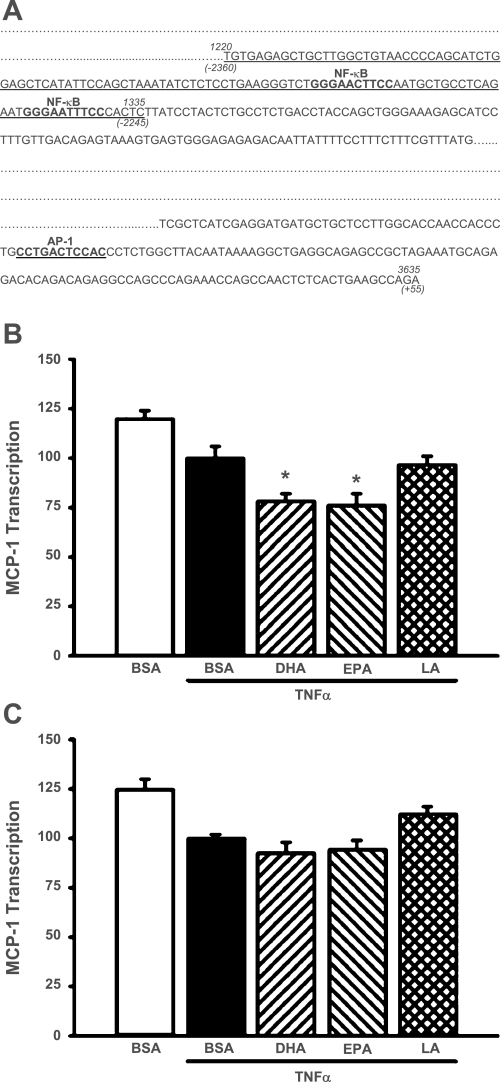Fig. 5.
A: map of the promoter region of the rat MCP-1 gene, including the consensus NF-κB and AP-1 binding sites. The 2 NF-κB sites located in the distal enhancer and the AP-1 site located in the proximal promoter are shown in bold. The sequences deleted to prepare the NF-κB and NF-κB/AP-1 deletion mutants are underlined. B: deletion of the NF-κB site within the MCP-1 promoter region abolishes TNF-α-stimulated MCP-1 transcription. MCs were cotransfected with an NF-κB deletion mutant of MCP-1/pGL3 and a Renilla luciferase control plasmid (phRG-Basic) for 8 h, pretreated for 24 h with 20 μM fatty acids, and then exposed to TNF-α (10 ng/ml) for 6 h. *P < 0.05 vs. TNF-α-treated cells. C: deletion of both the NF-κB and AP-1 sites prevents n-3 fatty acid-mediated suppression of MCP-1 transcription. MCs were cotransfected with an AP-1/NF-κB deletion mutant of MCP-1/pGL3 and a Renilla luciferase control plasmid (phRG-Basic) for 8 h, pretreated with DHA, EPA, or LA (20 μM) for 24 h, and exposed to TNF-α (10 ng/ml) for 6 h. Luciferase activity was assessed using the Dual Luciferase Reporter Assay System (Promega). Values are expressed as means ± SE relative to TNF-α-treated cells; n = 3 experiments.

